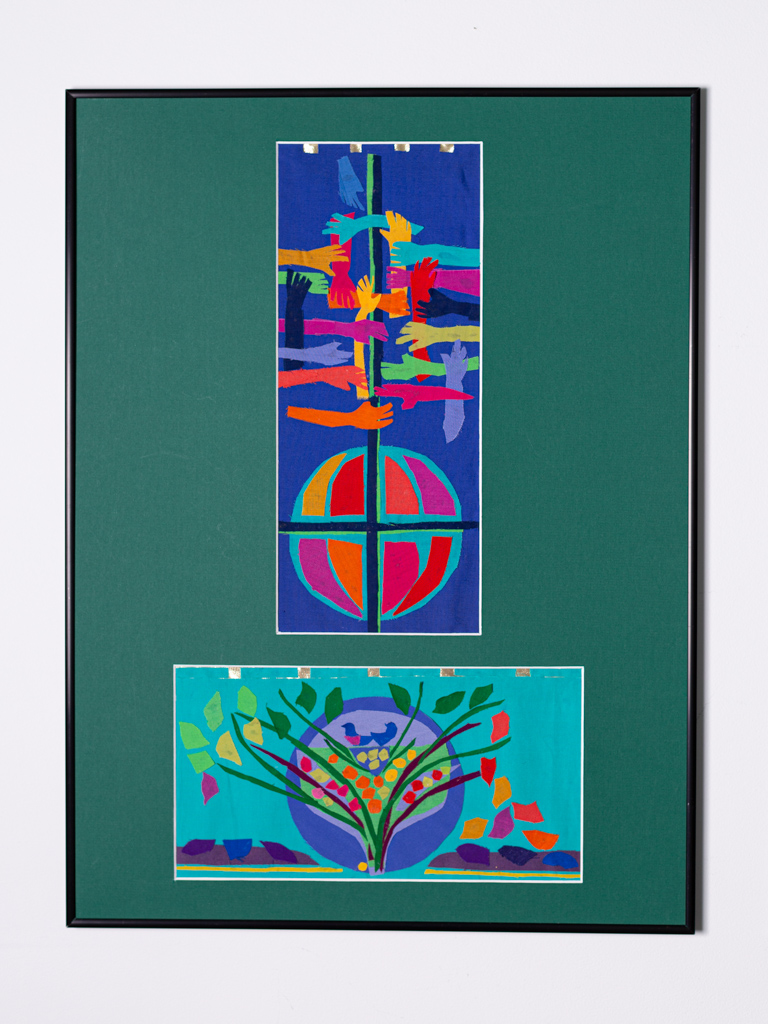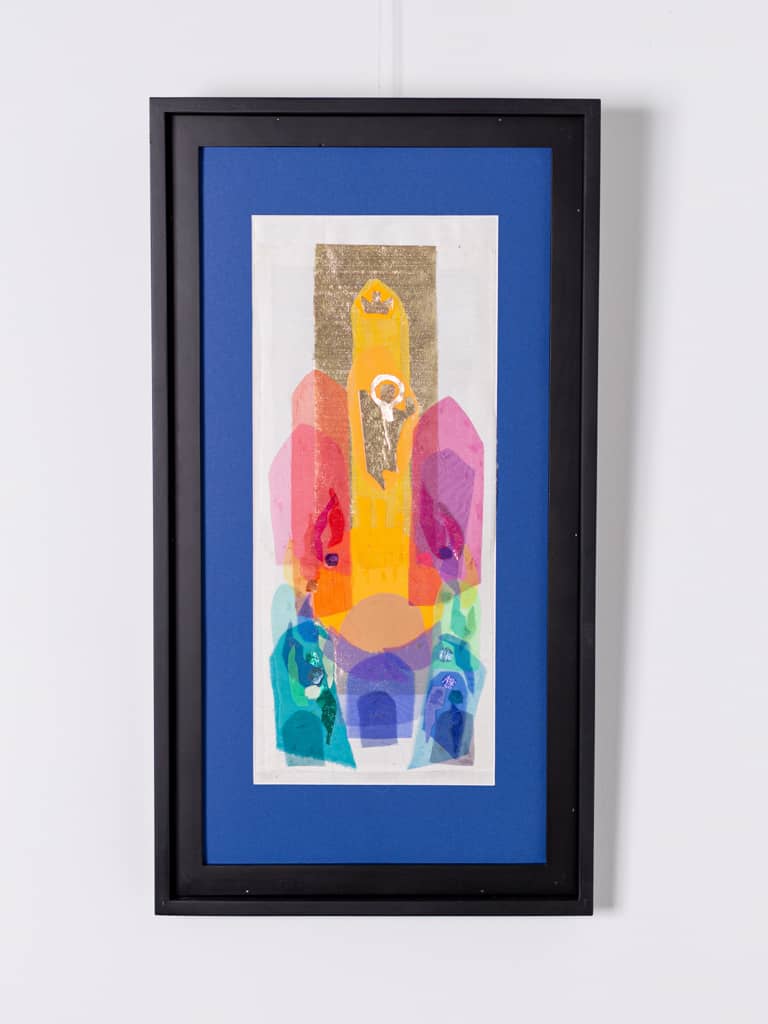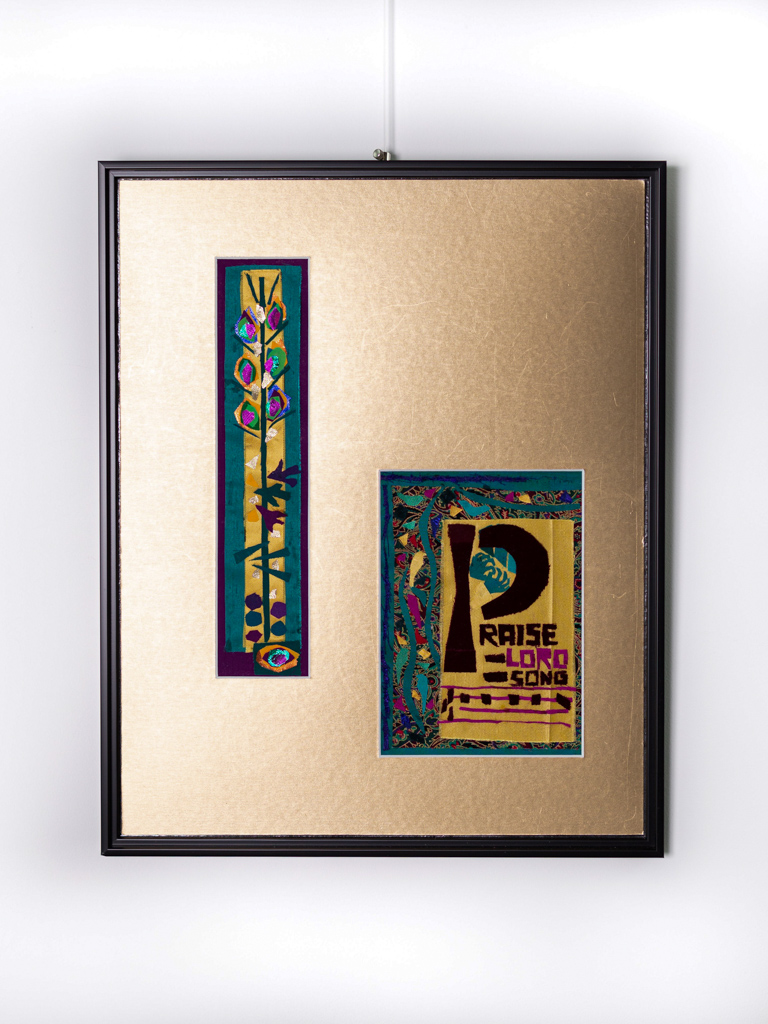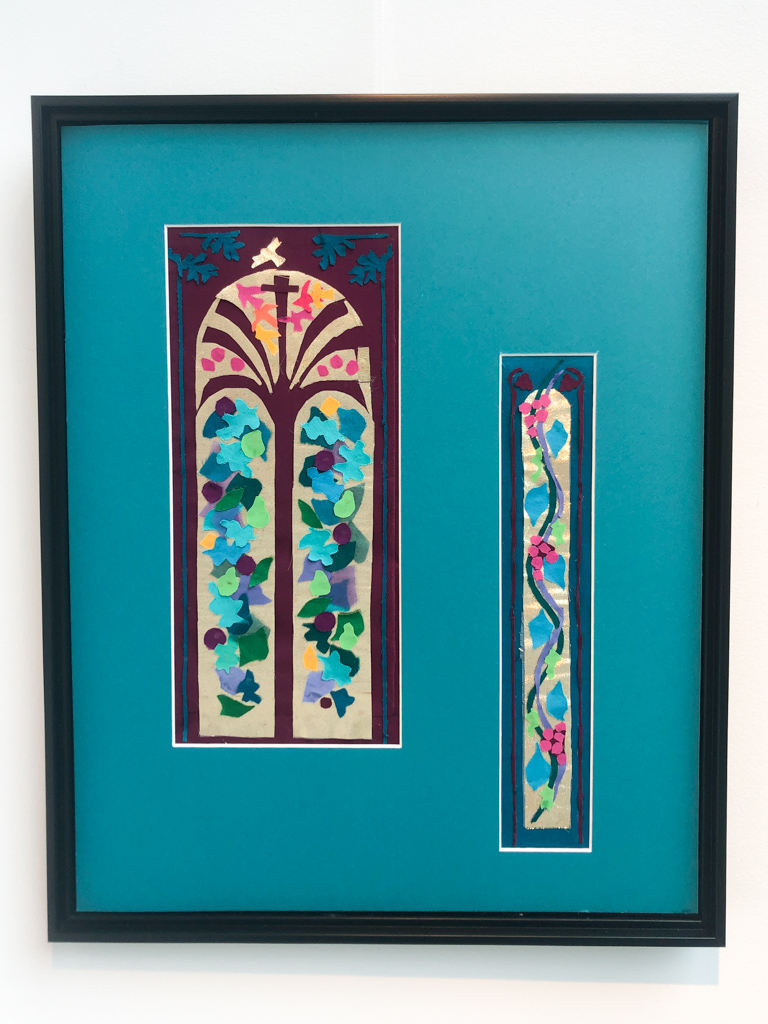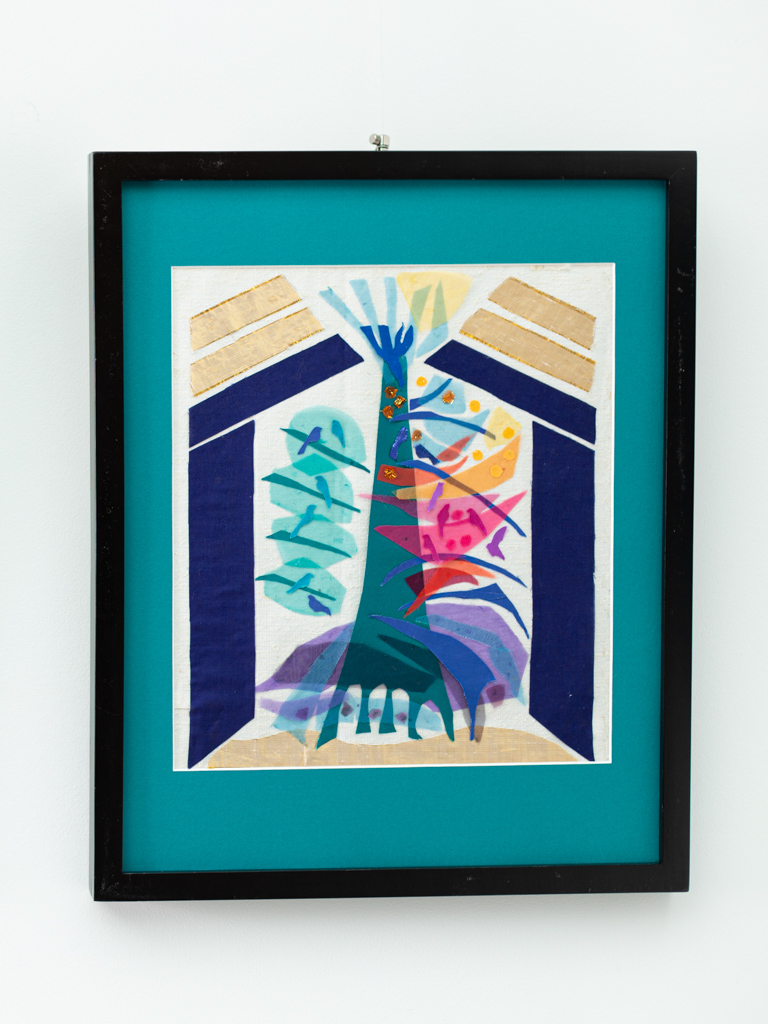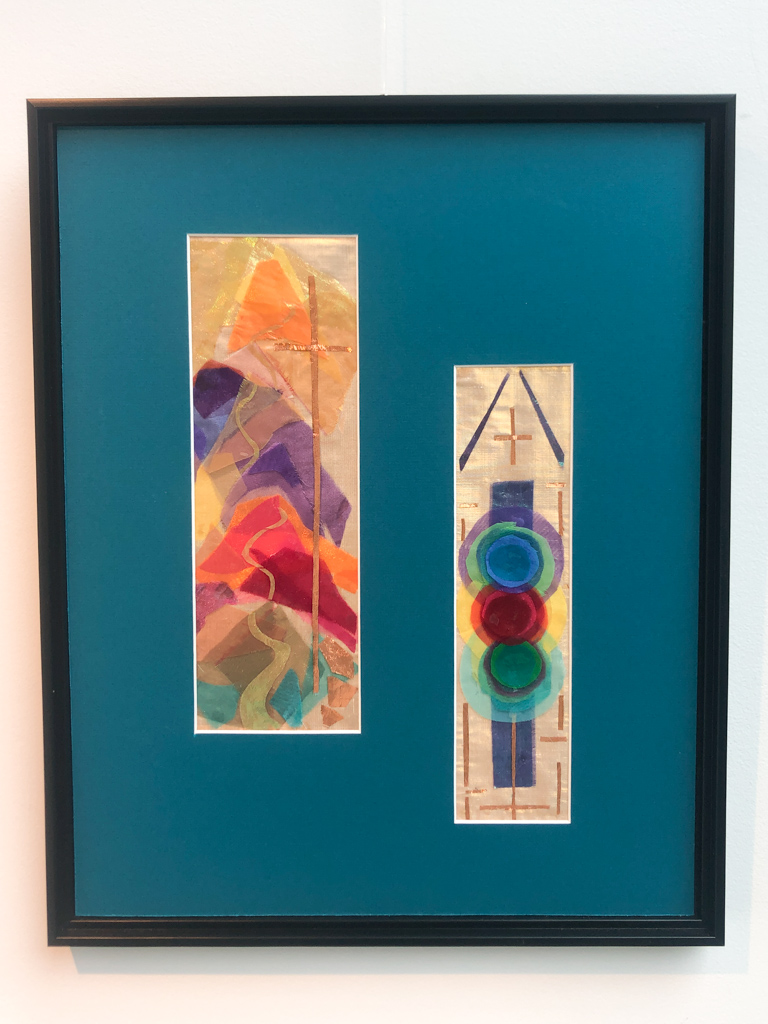A Retrospective
Mae Runions
Mae Runions is a Vancouver artist who has been working in fabric art since 1984. Runions uses images symbolically to open up ancient faith stories and awaken fresh responses in the spirit. Symbols are derived from the natural world and from historical and theological sources including sacred texts, religious history, and traditional iconographies. She aims to give a modern joyful rendering through abstractions and colors. Her primary technique is appliqué. She combines a variety of fabrics, textures and stitchery, both hand and machine, to create her pieces.
Runions' banners have long hung in the Regent College Atrium and Chapel. Now brightening the walls of the Dal Schindell Gallery, this colourful exhibition highlights her working art, models and mock-ups, throughout the years.
Curatorial Statement
This exhibition, like many things, has been frustrated by a global pandemic. A year in the making, we longed to present Mae's work in the physical gallery space, to applaud her brilliance at an opening night, and to listen to her gentle wisdom face to face. Still, as Mae says, we have become good at waiting. Exploring Mae's work and reading her insightful artist statements, I sense that she has often waited, patiently and graciously, until inspiration, so perfectly timed, produces material hope through her work. Trusting that timing too, Mae Runions: A Retrospective launches on our website. It is an honour to host her many years of making at such a time as this. The vibrant colours contrast our long and isolated winter. Carefully layered, flimsy fabrics, shape images which remind us of firm faithfulness: the tree, the river, and the cross. Mae's work has ministered and welcomed many over the years. Her legacy of artistic appliqué currently hangs in churches, hospitals, and other public spaces around Vancouver and beyond. However, this exhibition is unique. It highlights the intricacy and intentionality of her work. Prayerfully chosen symbols and images (though at times abstracted), backed with liturgical colours, attest to Mae's uncanny ability to hear what a community needs and see what best serves their shared place. Armed with scissors, glue and even gold pins, her prophetic vision unfolds in these working pieces. I invite you to scroll through her chronologically presented work, attending to both the imagery and Mae's descriptions. Some of these mock-ups, and the banners they produced, are older than Regent College students; but their beauty, articulated truths and meaning are timeless. We have only to wait and see.
Bryana Russell
Curator




